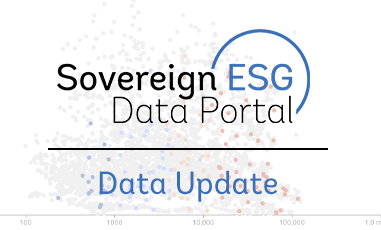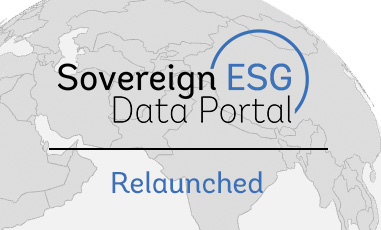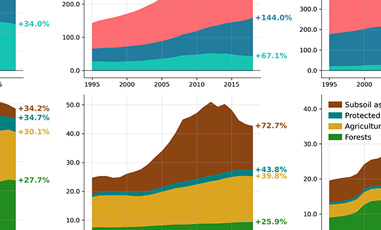Data Update: The Sovereign ESG Data Portal is updated with the most recent data in the ESG landscape. This update increased the number of indicators to 171, available for 213 economies up to 2023. The World Bank is continuously refining the ESG framework and empowering users to make their own comprehensive analyses. Curious what’s new? Read about the details in this data story.
Refreshed framework
Key climate risk and resilience indicators have been expanded, providing more recent data to analyze long-term environmental trends up to 2023. You can now explore the latest figures on tree cover loss and examine global temperature patterns with the indicators cooling degree days , heating degree days , and heat indexes from the Climate Change Knowledge Portal. The Standardized Precipitation Evapotranspiration Index (SPEI) - a widely used drought indicator that helps assess water stress – has been updated with two additional years. Additionally, data on ambient water quality now covers 34 additional countries, strengthening its role in monitoring Sustainable Development Goal 6 .
Beyond environmental indicators, new data is available for our social indicators, such as unemployment rates , and governance indicators, including the Economic and Social Rights Performance Score . Visit our framework page page for an overview of the updated temporal and regional coverage of selected ESG indicators.
Enhanced emission tracking
Newly available on the Sovereign ESG Data Portal are 43 indicators on emissions of greenhouse gasses (GHG) covered under the Kyoto Protocol that were recently added to the World Development Indicators. This expanded dataset provides a detailed breakdown by gas —carbon dioxide, methane, nitrous oxide, and fluorinated gases —as well as by five key sectors: agriculture, energy, industrial processes, transport, and waste. The data are harmonized using a methodology developed by the Intergovernmental Panel on Climate Change (IPCC), which allows for comparison across countries as well as sectors.
A key enhancement in this update is the addition of land use, land-use change, and forestry (LULUCF) indicators, which measure carbon fluxes from deforestation , forest land , organic soils , and other land categories . These indicators provide a net emissions balance, capturing both carbon sequestration and emissions. New measures on carbon intensity of GDP and per capita emissions further enhance insights into emissions distribution across economies. Additionally, four indicators now track emissions against 1990 Kyoto Protocol baseline levels, improving assessments of global reduction progress.
Coming soon: define reachable targets using the FAB dashboard
In a few weeks the Sovereign ESG Data Portal will launch an exciting new tool—the Feasibility and Ambitiousness Dashboard—designed to help users set realistic yet impactful sovereign ESG targets. This tool will enable issuers and policymakers to balance ambition with feasibility when designing sustainability frameworks. Want to stay ahead? Read more about Feasibility and Ambitiousness in sovereign ESG targets and sign up for our newsletter for updates.











